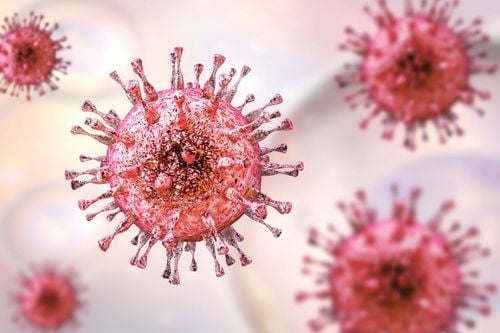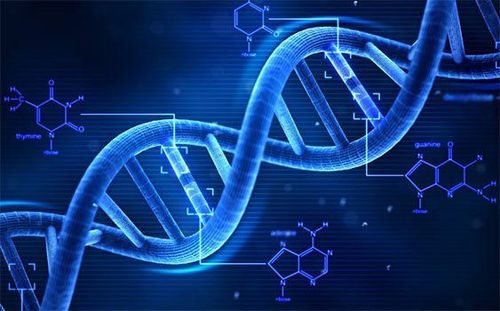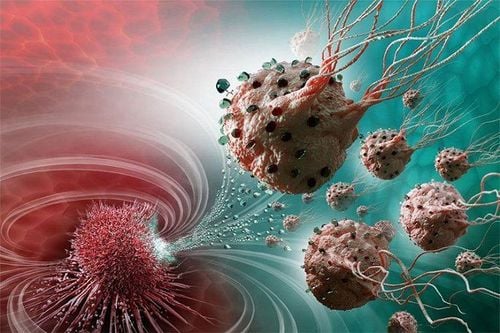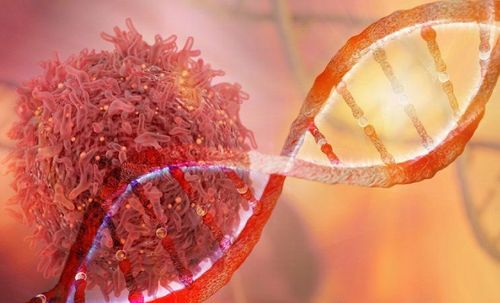This is an automatically translated article.
The article was written by Master, Doctor Bui Thi Hong Khang - Pathologist - Laboratory Department - Vinmec Central Park International General Hospital.Cancer epidemiology is the study of the distribution of cancer in a population and related factors such as age, occupation, race, culture, custom,... Cancer epidemiology provides valuable information, contributing to the elucidation of carcinogenesis. The following are some of the factors commonly investigated in cancer epidemiological studies.
1. Cancer incidence
According to the latest report of the World Health Organization (WHO) in 2018, there are an estimated 18.1 million new cancer cases and 9.6 million cancer deaths worldwide. In Vietnam, although statistics are incomplete, the Ministry of Health estimates there are about 150,000 new cancer cases and 100,000 cancer deaths each year.Cancer incidence is defined as the number of new cancer cases appearing in a population every year, calculated per 100,000 population. According to calculations by the International Agency for Research on Cancer (GLOBOCAN-IARC): Incidence cancer in the US in 2018 was 352 cases/100,000 population/year, corresponding to 2,129,118 new cancer cases and 616,714 deaths; The cost of the care and treatment of these patients has reached 150 billion dollars.
Cancer incidence in Vietnam in 2018 was 151.4 cases/100,000 population/year, corresponding to 164,671 new cancer cases and 114,871 deaths.
Comparison between the group of industrialized countries and the group of developing countries, there is a difference in the incidence of 10 most common cancers in both sexes; may be related to the level of socio-economic development of each group. Example: Cancer of the lips/oropharynx ranks 3rd in men in developing countries but only 14th in developed countries; Cervical cancer remains relatively common among women in poor countries, ranking second to sixth in rich countries.
Even within the same country, we can also see differences in the incidence of common cancers between different regions. For example, comparing Ho Chi Minh City and Hanoi over a 5-year period from 2004 to 2008, we find that the four most common cancers in men are lung, liver, colon and stomach cancers. ; Among women, the leading cancer is breast cancer, but the incidence in Hanoi is almost twice as high, cervical cancer takes the 2nd place in Ho Chi Minh City while it ranks 5th in Hanoi. . Understanding what causes these differences can help design better cancer prevention strategies for each population.

2. Geographic factors
There is variation in the incidence of many types of cancer between different geographic regions. To explain this difference is due to the influence of racial factors or environmental factors, people often conduct research on groups of immigrants. Example:In Japan, stomach cancer has the highest incidence, 10 times more than in the US. But in Japanese families immigrating to the US, the descendants have a low rate of stomach cancer like the native population. Thus, the high incidence of gastric cancer in Japan is probably due to environmental factors (spicy diet) rather than racial factors. Women in North America have the highest rate of breast cancer, 2-3 times more than Asian women, probably due to a high-fat diet, low birth rate and late birth. Liver cancer is relatively rare in the United States but is quite common in Southeast Asian countries, probably related to hepatitis B and aflatoxin-contaminated foods commonly found in this region.
Trắc nghiệm: Thử hiểu biết của bạn về bệnh ung thư
Ung thư là nguyên nhân gây tử vong hàng thứ 2 trên thế giới. Thử sức cùng bài trắc nghiệm sau đây sẽ giúp bạn có thêm kiến thức về yếu tố nguy cơ cũng như cách phòng ngừa bệnh ung thư.
Bài dịch từ: webmd.com
3. Age
About 77% of carcinoma cases occur after age 55. Cancer records at the Oncology Hospital show that the incidence of leading cancers in both sexes begins to increase rapidly after the age of 40. The increase in cancer incidence with age is considered to be a consequence of the accumulation over time of somatic cell mutations under the influence of environmental oncogenic factors. The following table shows the increasing risk of cancer with age.However, there are also types of cancer that often occur in children under 5 years old, such as lymphoblastic leukemia, retinoblastoma, neuroblastoma, Wilms tumor, rhabdomyosarcoma, etc.
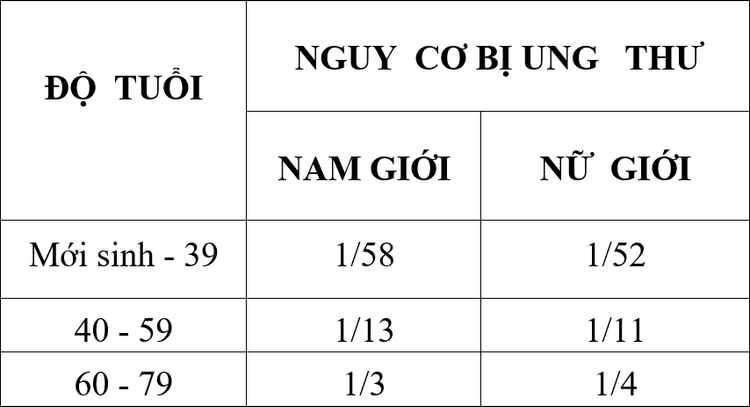
4. Occupation
Percival Pott was the first in 1775 to note an increase in the incidence of scrotal skin cancer in chimney sweeps, suggesting that soot was the culprit. Today, it has been identified that the carcinogens in soot are polycyclic aromatic hydrocarbons.Cervical cancer has a high incidence in people active in the sex "industry" but is very rare in nuns. Proving that the cause of cancer can be a sexually transmitted factor that has now been identified as the human papillomavirus (HPV).
5. Heredity
Of the more than 200 known types of cancer, the vast majority are caused by genetic mutations that occur spontaneously or as a result of environmental factors. Only about 5 - 10% of cases have the role of genetic factors with different degrees such as hereditary cancer, genetic disease that makes the patient's body susceptible to cancer and familial cancer. .5.1. Hereditary cancer To date, more than 30 types of cancer have been identified that are inherited by autosomal dominant genotype. Example:
Retinoblastoma: A rare childhood cancer, the incidence is only about 1 in 30,000 live births, including 2 forms: sporadic (60%) and hereditary (40% of cases). In the genetic form, children carrying disease genes have a 10,000 times higher risk of having tumors than normal children; Tumors usually appear in both eyes, as opposed to sporadic, often only in one eye. At present, we know that the mechanism of oncogenesis is caused by mutations in the Rb gene, located on the long arm of chromosome 13.
Familial adenomatous polyposis: Occurs no more than 1% colorectal cancer. Carriers of the disease will have hundreds of adenomatous polyps in the colon - rectum by the age of 30; By age 50, some of these polyps will progress to adenocarcinoma. The mechanism of carcinogenesis is caused by mutations in the APC gene, located on the long arm of chromosome 5.
2.2. Genetic predisposition to cancer: There are some diseases that are inherited in recessive - autosomal recessive, although they are not cancer, but homozygous carriers of the disease gene will have a predisposition to cancer. than the average person. Example:
xeroderma pigmentosum: Due to mutations in XP genes located on chromosomes 2, 3, 6, 9, 11, 13, 16 and 19; Individuals homozygous for these gene mutations are susceptible to malignant melanoma and other types of skin cancer under the influence of ultraviolet radiation present in sunlight.
2.3. Familial cancer: In some families, sometimes there is a coincidence of 2-3 members suffering from the same type of cancer such as breast cancer, ovarian cancer, colorectal cancer, and cancer. thyroid gland, ... but the inheritance pattern is not clearly dominant or recessive. The cause of these cases may be due to the transmission in the family of certain gene mutations, which make members at risk of cancer 2-3 times higher than the general population.
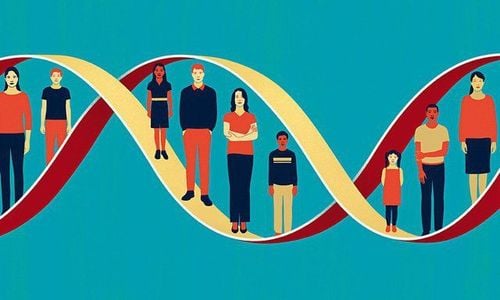
6. Precancerous lesions
These are lesions that have a high risk of turning cancerous but do not always turn cancerous.Example:
Prolonged regenerative repair: Non-healing skin sores, chronic skin fistulas can turn into squamous cell carcinoma; Chronic hepatitis can turn into liver cancer. Atypical hyperplasia and dysplasia: Atypical endometrial hyperplasia can turn into endometrial cancer; atypical hyperplasia of the ductal epithelium of the mammary gland may transform into ductal carcinoma; Cervical epithelial dysplasia can turn into cervical cancer; Respiratory epithelial dysplasia from smoking can turn into bronchial cancer; Gastrointestinal epithelial dysplasia in chronic ulcerative colitis can transform into colorectal carcinoma. Leukoplakia lesions of the oral mucosa, penis, and vulva may transform into squamous cell carcinoma.
7. The role of the immune system
Compared with the general population, the risk of cancer is increased 200 times in patients with congenital immunodeficiency, from 3 to 5 times in patients with acquired immunodeficiency (due to AIDS, taking immunosuppressive drugs). fluid after organ transplant); This proves that the activity of the immune system has the ability to prevent the occurrence of cancer. Indeed, immune cells are constantly scanning the entire body (called immunosurveillance), in order to detect and promptly destroy body cells that have just transformed into cells. cancer. Immune cells capable of killing cancer cells include macrophages and natural killer cells (NK cells) of the natural immune response; cytotoxic T cells (CD8+ T) of the acquired immune response.However, it can be said that the immune system of most cancer patients at the time of clinical tumor detection is still functioning normally, that is, it still effectively blocks the invasion of microorganisms. from the outside into the body but proved helpless before the growth of the tumor. The reason is that in the process of proliferation, tumor cells have accumulated new mutations that allow them to fight the immune system by two mechanisms:
Immune evasion: CD8+ T cells only kill tumor cells express tumor antigens along with major histocompatibility complex class I (MHC I). To avoid destruction, tumor cells can hide MHC I and become "invisible" to CD8+ T cells; as in some cases of Merkel cell skin cancer. Immuno editing: Tumor cells can produce substances that alter the functioning of the immune system in their favor. For example: In breast cancer, tumor cells produce a chemokine called CCL22, which attracts regulatory T cells (Treg, immune phenotype: CD4+, CD25+, FOX3P), increases the number of Treg in tumor stroma is 3 times higher than normal. Treg inhibits the activity of CD4+ and CD8+ T cells, preventing tumor cell death.
In many other cancers such as melanoma, lung cancer, urothelial carcinoma,..., tumor cells can express PD-L1, which binds to the PD-1 receptor (programmed cell death protein 1). receptor ) is present on the surface of CD4+ and CD8+ T cells; The binding between PD-L1 and PD-1 will promote T cells to self-destruct, preventing tumor cells from being destroyed.
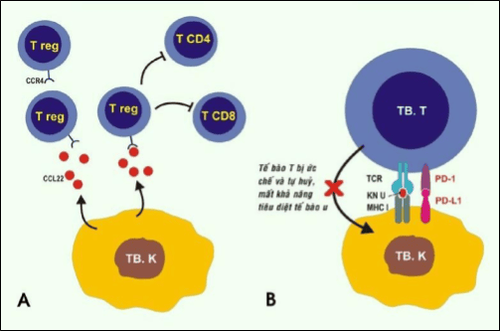
Please dial HOTLINE for more information or register for an appointment HERE. Download MyVinmec app to make appointments faster and to manage your bookings easily.






